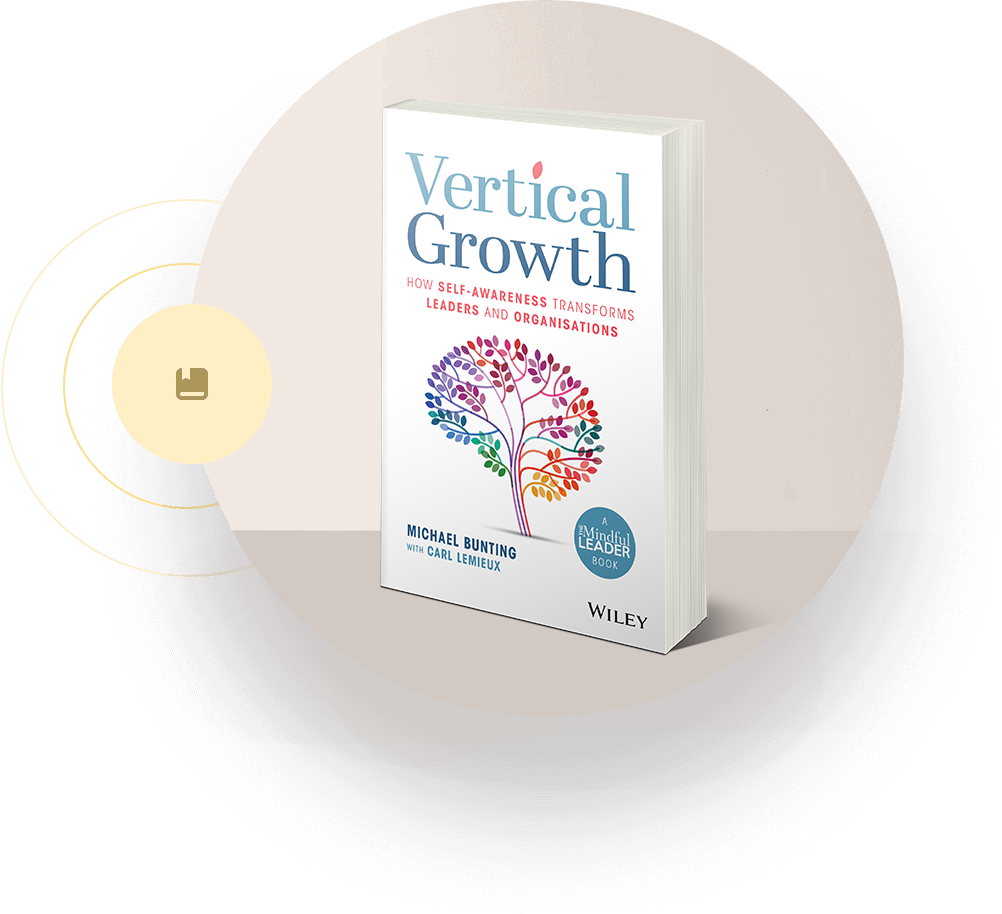The coaching industry is growing, but not always deepening. As more coaches enter the field, the differentiator is no longer technique; it’s depth. The best coaches don’t just help their clients build new skills. They help them expand how they think, relate, and lead. This is the heart of vertical development.
Traditional coaching approaches focus on horizontal growth. It’s about adding knowledge, refining behaviours, and learning frameworks. That’s important, but it only takes a client so far.
Today’s leadership challenges are too complex, too relational, and too unpredictable to be solved by surface-level change. What’s needed is a deeper shift in perspective and identity. Not just better habits, but a better internal operating system.
This is where accredited coach training must evolve. Coaching programs need to equip coaches with more than conversation structures or performance tools. They need to prepare coaches to hold space for transformation. To support clients in leading with greater clarity, maturity, and intention.
In this article, we’ll explore what vertical development really means, how it changes the coaching process, and why coaches who embrace it are leading the next wave of impact. Because in a crowded field, the most effective coaches aren’t louder. They’re deeper.
Why Skill-Building Isn’t Enough Anymore
- A client might know how to delegate. But if they struggle with control, they’ll keep taking work back.
- They might understand psychological safety. But if they equate vulnerability with weakness, the concept stays intellectual.
- They might agree with the idea of empowerment. But under stress, they revert to directing instead of coaching.
To address this, coaches need to help clients surface and shift the internal patterns that drive their behaviour. This is the work of vertical development; and it calls for a deeper approach to coaching.
It’s also why the most effective accredited coach training doesn’t just teach what to say in a session. It develops the coach’s own capacity to see more clearly, think more systemically, and hold deeper developmental space.
What is Vertical Development?
Vertical development is the process of expanding how a person makes sense of the world. It’s not about adding new knowledge or skills. Rather, it’s about evolving the internal operating system that drives how someone thinks, reacts, and leads.
In coaching, this means supporting clients to shift how they interpret situations, manage complexity, and relate to others. Where horizontal development answers the question “What can I do?”, vertical development asks “How am I seeing this?” and “What’s shaping my response?”
The distinction matters. A leader might learn a new feedback model (a horizontal gain) but still avoid hard conversations because they fear conflict or rejection. Until the belief behind the behaviour is addressed, the pattern doesn’t change.
Vertical development helps leaders build:
- Greater self-regulation: Responding with intention instead of reactivity
- Clarity under pressure: Staying centred even when stakes are high
- Values-aligned decision-making: Choosing actions that reflect deeper purpose
These shifts reflect a broader, more mature way of thinking. One that can hold multiple perspectives and tolerate ambiguity. This allows you to navigate the emotional weight of leadership with less ego and more presence.
That’s why vertical development is foundational. It doesn’t replace behavioural coaching, it strengthens it. When leaders grow at this level, behavioural change becomes more sustainable and aligned with who they want to be.
The Coach’s Role in Vertical Growth
Coaches play a pivotal role in vertical development. Not by offering solutions, but by creating the conditions for deeper growth.
This kind of coaching isn’t about quick wins or surface fixes. It’s about helping clients see themselves more clearly, question long-held assumptions, and choose new ways of responding.
Vertical development requires stretch. But stretch without safety doesn’t work. Coaches must first establish trust. They need to create a space where vulnerability is possible and reflection is welcomed. From there, they guide clients into deeper inquiry:
- What are you reacting to?
- What story are you telling yourself?
- What values are you honouring (or avoiding)?
- What might another perspective reveal?
These questions help clients uncover the mindsets that shape their leadership. Often, they uncover drivers like fear of failure, the need to control, or deeply held beliefs about what “good leadership” looks like. Once visible, these patterns can be examined, challenged, and reframed.
This is where real transformation happens. The coach isn’t directing the change. They’re holding the mirror and asking the questions. They’re walking alongside the client as they build the capacity to lead with more awareness and maturity.
Horizontal vs Vertical Coaching
|
The more self-aware a leader becomes, the less they’re driven by default responses. And the more intentional their leadership, the more trust, clarity, and resilience they create.
For coaches, enabling this kind of growth is one of the most powerful and rewarding aspects of the work. It’s not about fixing the leader. It’s about helping them evolve.
How the Leadership Growth Profile Supports Deeper Development
The Leadership Growth Profile is far more than a diagnostic. It’s a developmental tool designed to spark deep, lasting growth.
Using a 360° format, the Leadership Growth Profile captures structured behavioural feedback across the leadership system. But unlike traditional assessments, it doesn’t stop at rating effectiveness. It reveals patterns. Specifically, it distinguishes between values-aligned Green Zone behaviours and reactive Red Zone responses. These are the behaviours that often go unnoticed, especially under pressure.
For coaches, this behavioural insight is gold. It reveals what the leader can’t always see. How often certain behaviours show up, how others experience them, and where misalignments might be holding the leader back.
These patterns become the starting point for transformational coaching. A practice grounded in real data, and focused on sustainable change.
Because the feedback is built on observable behaviours, it’s concrete. Leaders can move beyond vague feedback like “be more strategic” to specific insights like “tends to shut down ideas too quickly under pressure.” And once a behaviour is named, it can be explored, experimented with, and changed.
The Leadership Growth Profile aligns directly with the Triple Goal framework:
- It supports Great Performance by building more intentional, consistent leadership
- It enables Great Learning by turning feedback into fuel for growth
- It shapes Great Workplaces by fostering trust, safety, and clarity
For coaches who want to deepen their impact, becoming certified in the Leadership Growth Profile is a natural next step. Triple Goal’s accredited coaching certification is now recognised by the International Coaching Federation (ICF), providing 22 hours of Continuing Coach Education (CCE). It equips you with the tools, training, and confidence to use the assessment to drive real, lasting progress.
Becoming a Vertical Coach: What It Takes
Vertical coaching isn’t about having more answers. It’s about asking better questions. To guide leaders through deeper development, coaches need to be grounded in their own. That means building the inner capacity to hold space for complexity, discomfort, and slow-burn insight.
It starts with self-awareness. Coaches can only support transformation in others to the extent they’ve done that work themselves. Emotional literacy, perspective-taking, and a strong sense of presence are essential. So is being able to sit with ambiguity — not rushing to fix, but trusting the process.
It also requires intentional practice. Vertical coaches learn to recognise when a client is stuck in the “what” of a problem and gently steer them toward context. It’s about exploring how they’re thinking, what assumptions are at play, and what’s not being said.
Some helpful questions:
- What belief is driving this reaction?
- How do you think your team is experiencing this?
- What feels uncertain or uncomfortable here and why?
- If you zoomed out, what might you see differently?
These prompts move the conversation from surface-level action to deeper reflection. They emerge from trust, timing, and the coach’s ability to listen beyond the words.
Coaches who want to strengthen this capacity can do so through development-focused training. The accredited coaching certification offered by Triple Goal is one path. It not only teaches the mechanics of the Leadership Growth Profile, but helps coaches sharpen the mindset and presence required for vertical work.
Coaching That Grows People, Not Just Performance
Coaching is shifting. The clients we work with today need more than support to hit their targets. They need help expanding how they see, think, and lead. That’s the work of vertical development. And it’s where great coaching now begins.
This shift isn’t a trend. It’s a necessity. In a world shaped by complexity, uncertainty, and increasing demands on leaders, depth matters. Coaches who can hold that depth — and help their clients access it — will be the ones who stay relevant, trusted, and impactful.
If you’re committed to growing people, not just performance, it’s time to grow your own capacity too. Tools like the Leadership Growth Profile can help you go further, faster. And the right training can help you use them with skill and integrity.
To learn how, explore Triple Goal’s ICF-accredited coaching certification — and earn 22 CCE hours while building the capacity to lead deeper change.








